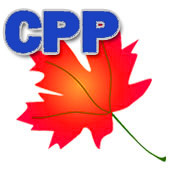 Making the rounds of social media this afternoon is a profile of Yours Truly created by Toronto-based robo adviser Wealthsimple.
Making the rounds of social media this afternoon is a profile of Yours Truly created by Toronto-based robo adviser Wealthsimple.
It can be found at its Grow blog, titled One of Canada’s Favourite Money Gurus Tells Us How He Retired at 60 Without Ever Being Rich. We hope to run the piece in its entirety here at the Hub but in the meantime, social media waits for no one.
It was based on an interview conducted a few weeks ago and readers may find the prose as eclectic as the artists’ rendition of myself. But as one reader noted on Facebook, there’s plenty of personal finance “wisdom” in there (if I do say so myself): no surprise since it refers in part to last summer’s 7 Eternal Truths of Personal Finance that ran in the Financial Post, and which are revisited in the book I’m releasing this summer. Written with Mike Drak, it’s called Victory Lap Retirement. Link is to Mike’s new site, where you can preorder the book. We’ll resume running Mike’s Victory Lap blogs here at the Hub in a week or two.
The Wealthsimple profile also refers obliquely to the new book.
NewRetirement.com Q&A with me on benefits of Findependence
Also today, NewRetirement.com published a Q&A with me that also talks about Findependence and Victory Lap Retirement. Click on Jonathan Chevreau on the Benefits of Financial Independence. It does a pretty good job of summarizing what Mike and I describe in the book: the years of “slaving and saving” needed to get to the Findependence Finish Line (aka Findependence Day), and then the post-corporate Victory Lap phase that ensues.
MoneySense blog on Bonds






